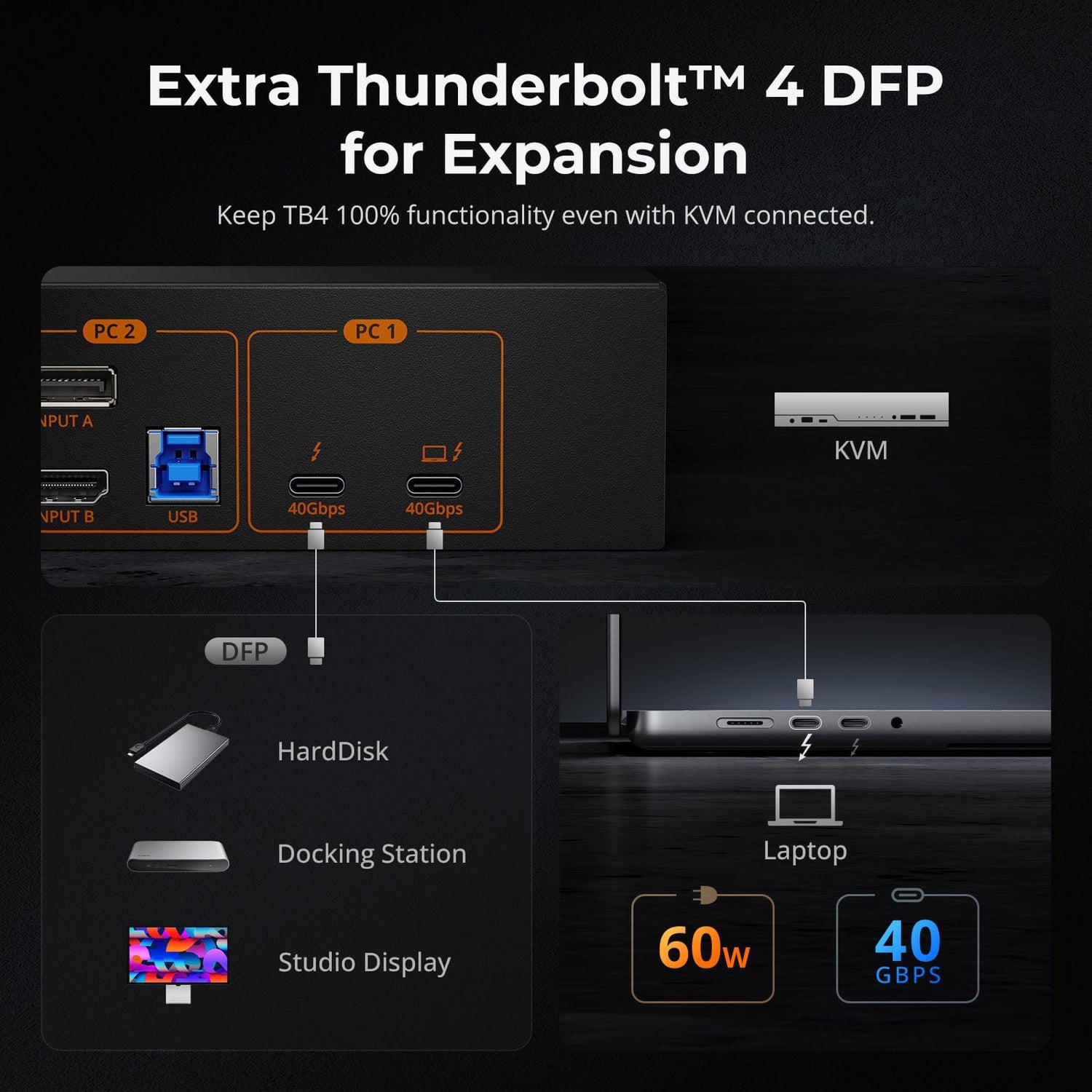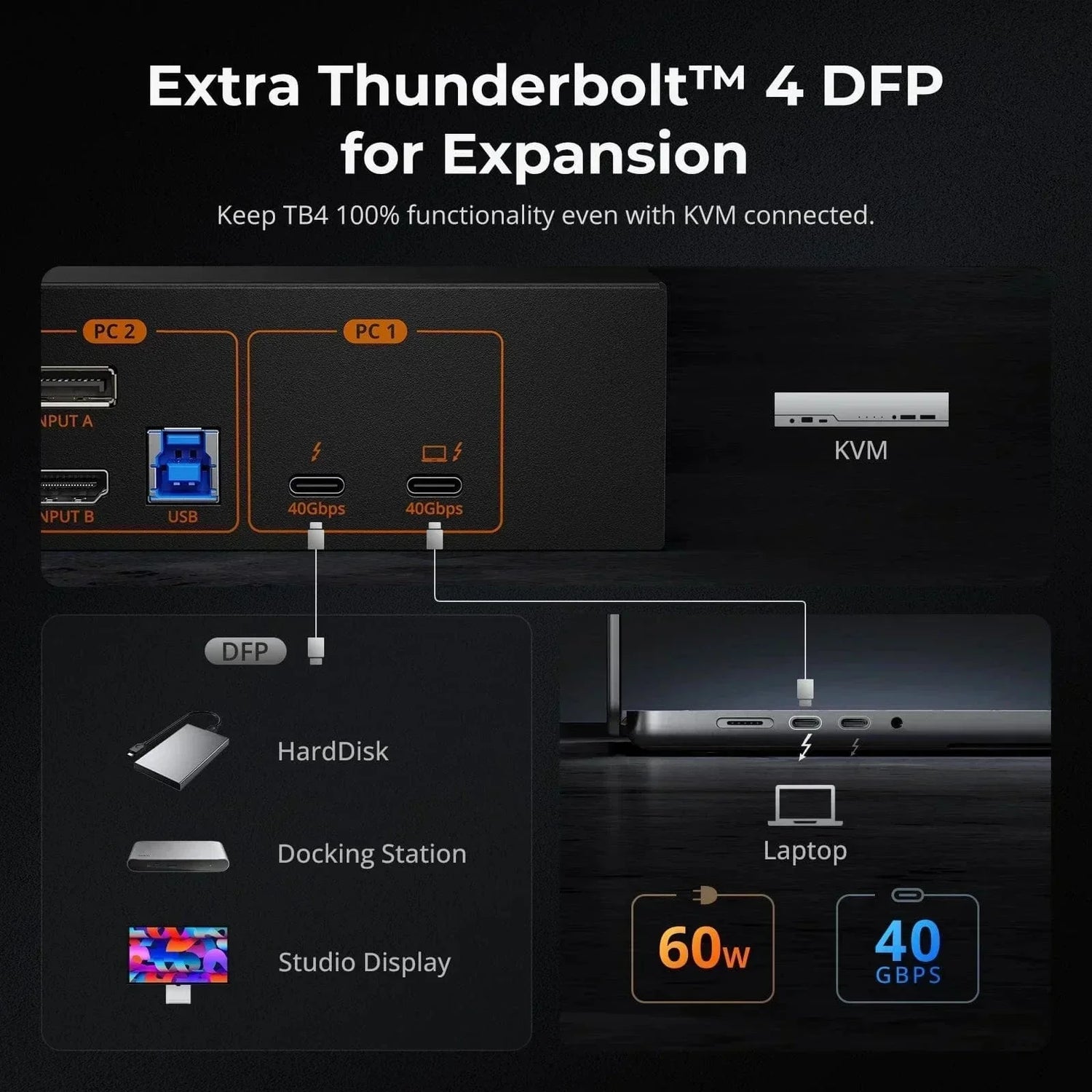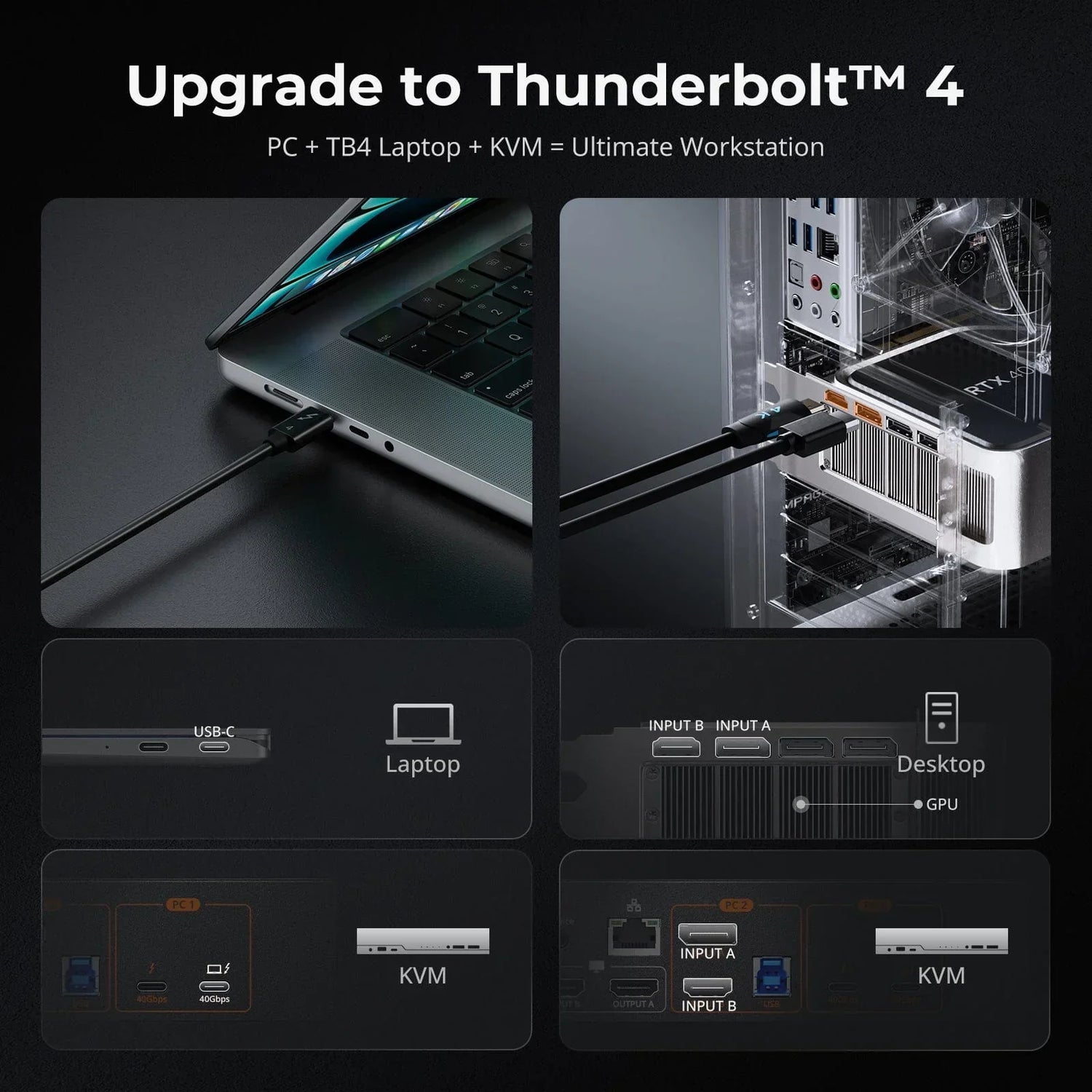Introduction
As the appeal and enhanced user experience of ultrawide screens gain recognition, a growing number of users are opting for these expansive displays over traditional dual-monitor setups. However, the compatibility of ultrawide screens with KVM switches poses a unique challenge. Not all KVM switches, despite having the correct port type and bandwidth, are compatible with ultrawide screens.
This raises an important question for users considering an ultrawide screen: what type of KVM switch is best suited for these monitors? Ultrawide screens often require higher bandwidth and specific transmission protocols to function optimally. Choosing a KVM switch without considering these factors can lead to a host of issues, such as black screens, reduced resolution, EDID discrepancies, and other display-related problems.
What is an ultrawide Monitor?
An ultrawide screen is characterized by a display aspect ratio that exceeds the conventional 16:9 ratio found in standard monitors and televisions. This term is primarily associated with computer monitors and high-definition televisions boasting significantly wider screens. These screens deliver a more panoramic and immersive viewing experience.
The most prevalent aspect ratio for ultrawide monitors is 21:9, though there are variants like 32:9. The extended width of these ratios allows for an expanded field of view, which has gained popularity in applications such as gaming, multimedia content creation, and multitasking. Ultrawide monitors are available in various resolutions, including 2560x1080 (Full HD ultrawide), 3440x1440 (Quad HD ultrawide), and 5120x1440 (Dual QHD ultrawide), catering to diverse user needs and preferences.
Why Opt for an Ultrawide Monitor?
-
Aspect Ratio: Ultrawide screens typically boast a 21:9 aspect ratio, offering substantially wider horizontal space compared to the standard 16:9 screens, ideal for enhanced visual experiences.
-
Cost-Effectiveness: An ultrawide monitor can function as two standard monitors, a common setup in many workplaces. This dual functionality often comes at a lower cost than purchasing two separate monitors of equivalent resolution.
-
Resolution Varieties: Ultrawide monitors are available in a range of resolutions, providing users with options for varying levels of detail and clarity, catering to specific viewing preferences.
-
Curved Design: Many ultrawide monitors feature a curved screen, designed to heighten the immersive experience by enveloping the viewer's field of vision.
-
Enhanced Multitasking: The expansive screen space of ultrawide monitors is ideal for multitasking, allowing for multiple applications to be open and visible simultaneously, eliminating the need for multiple screens.
-
Gaming Experience: The wider aspect ratio of ultrawide monitors offers a significant advantage for gaming, delivering a more expansive and immersive experience. Numerous modern games are optimized for ultrawide resolutions.
-
Boosted Productivity: Professionals such as video editors, graphic designers, and programmers find ultrawide monitors particularly beneficial. The additional screen real estate facilitates improved workflow and productivity, enabling more efficient content creation and programming tasks.
What is KVM Switch
For more information please read this blog:
How to Select a KVM Switch for Your Ultrawide Monitor
-
Resolution Support: To ensure compatibility with an ultrawide monitor, the most straightforward method is to confirm that the KVM switch explicitly supports ultrawide monitor resolutions. Key resolutions to look for include 2560x1080, 3440x1440, and 5120x1440. These figures correspond to the common aspect ratios of ultrawide monitors. It is advisable to meticulously review the product information page, as details about resolution support are often specified there.
-
Bandwidth: Due to their high resolution, ultrawide monitors typically require more bandwidth. Theoretically, any KVM switch with a bandwidth capacity of 8K60Hz or higher should be capable of supporting ultrawide screens. However, it's important to note that sufficient bandwidth alone doesn't guarantee compatibility with an ultrawide monitor. Incompatibilities can still occur despite the KVM switch having adequate bandwidth. Conversely, if the bandwidth of the KVM switch does not meet the requirements of the ultrawide monitor, achieving compatibility will definitely be impossible. Therefore, while bandwidth is a critical factor, it should not be the sole criterion for compatibility assessment.
-
Video Ports: It is crucial to verify that the KVM switch you select has video ports compatible with those on your ultrawide monitor. Common port types include HDMI, DisplayPort, and others. The compatibility of port types between your ultrawide monitor and the KVM switch is essential for establishing a successful connection. This ensures that the video signals are transmitted correctly without any need for additional adapters or converters, which can potentially affect the quality and reliability of the connection.
Compatible TESmart Models for Ultrawide Monitors
PKS0402A20 - DP KVM Switch for 4 PCs & 2 Monitors
It supports ultra-wide displays up to 5120x1440 resolution. This kit, complete with four KVM-to-PC cables, offers seamless switching and high-quality visual output. It's enhanced with dual display modes, EDID emulators for consistent display information, and multiple control options including a front panel, keyboard hotkeys, and IR remote.
PKS0802A10 - DP KVM Switch for 4 PCs & 2 Monitors
It offers the ability to control four computers with a single keyboard, mouse, and two monitors. This efficient solution includes four complete KVM-to-PC cables for seamless connectivity and supports high-resolution displays up to 3840*2160@60Hz. It features two unique display modes for individual or simultaneous monitor switching, EDID emulators for accurate display information, and multiple control options like a front panel button, keyboard hotkeys, IR remote, and RS232.








